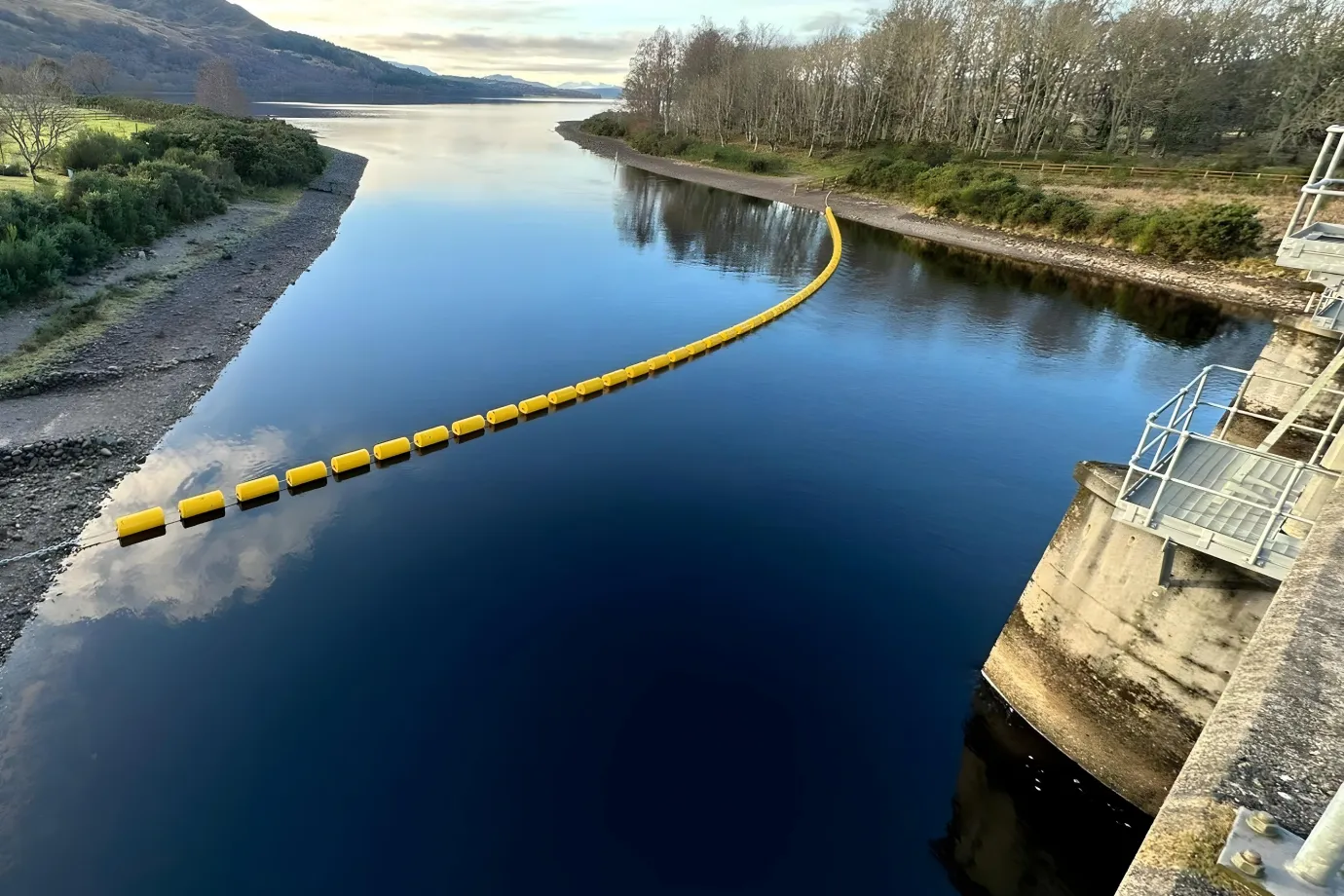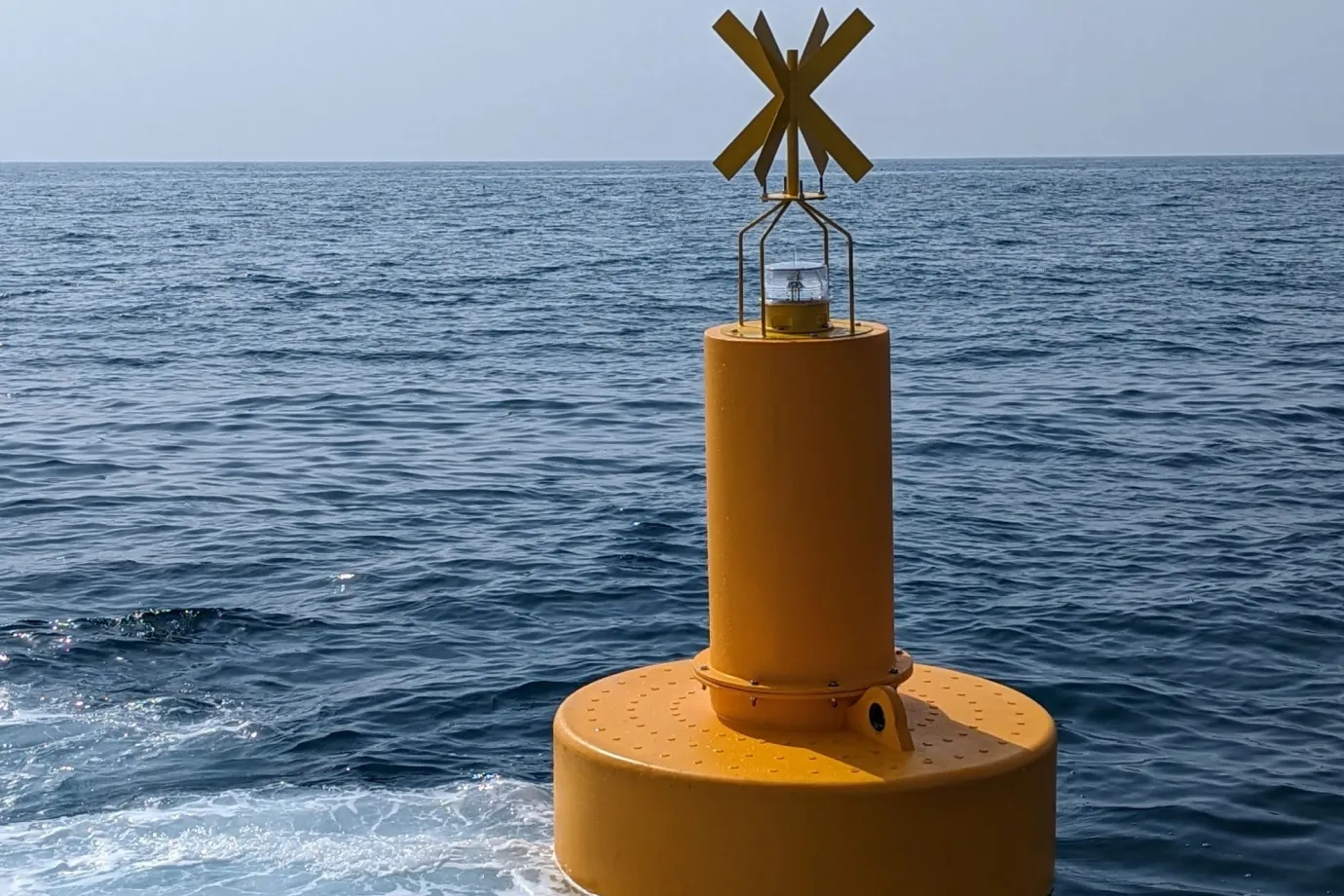Before comparing HDPE Boom vs Steel vs PVC, it’s important to understand that booms are floating barriers used in maritime operations, depending on their purpose and use case. According to the important role of these floating barriers, it is crucial for the booms to be efficient to meet whether environmental, safety, or security requirements of marine projects. One of the basic but vital factors that directly affects the boom’s performance, durability, and application is the material of its floats. HDPE, steel, and PVC are the most commonly used materials in the design and manufacture of booms. In this blog post, we will delve into what each material is, how they differ, and which floating barrier is best.
Engineered for long-term performance, our “HDPE Safety Floating Boom” is the ideal solution for safe and sustainable waterway protection.

What Is an HDPE Boom?

High-Density Polyethylene (HDPE) is a type of thermoplastic polymer made from petroleum. Known for its exceptional durability, HDPE offers longevity in versatile fields, especially in marine environments. By engineering the booms’ floats with HDPE, their durability in harsh marine conditions is ensured. Beyond its resistance and durability, HDPE offers a superior buoyancy due to its lightweight, which is a critical feature in floating barriers. The heavy-duty HDPE booms typically include floats covered by HDPE (whether through extrusion or rotomolding method) and filled with closed-cell foams, meeting both buoyancy and strength requirements.
Want to learn why HDPE performs best in extreme marine environments? Check out our guide on “Heavy-Duty HDPE Booms for Harsh Conditions“
HDPE Boom vs Steel vs PVC: A Comprehensive Comparison

The types of material used in the construction of floating barriers make apparent differentiations in their efficiency. High-Density Polyethylene (HDPE), steel, and Polyvinyl Chloride (PVC) are the most common materials used in designing and manufacturing the floating barriers. Here is a comprehensive comparison HDPE Boom vs Steel vs PVC based on their durability and resistance, maintenance needs, and environmental impacts to provide a valuable insight into each material:
Durability and Resistance
HDPE booms are typically engineered to withstand corrosion, UV exposure, continuous sunlight, chemical impacts, biofouling, and abrasion, providing an exceptionally long service life of up to 50 years. Steel booms, on the other hand, are resistant to rust and corrosion, but they are vulnerable and often require coating or regular maintenance for prolonged operation. PVC booms also offer significant longevity (approximately 50 to 70 years) with good resistance to chemicals, but they can be prone to cracking under environmental stress, temperature fluctuations, and UV rays.
Maintenance Needs
By offering superior durability and resistance, a heavy-duty HDPE boom requires minimal maintenance. However, it mostly depends on their manufacturing method. In rotational molding, the risk of failures is reduced due to designing integral floats. Steel booms, conversely, require ongoing maintenance, including frequent anti-corrosion or special protection to maintain integrity. Regular maintenance for PVC booms is also required to prevent cracks and other potential failures in extreme weather conditions, ensuring the efficiency and durability of the floating boom in the long term.
Environmental Impacts
Because of its thermoplastic structure and molecular stability, HDPE is a sustainable and fully recyclable material. Moreover, the HDPE booms do not require protection coatings or galvanization, which complicates recycling or releases pollutants during disposal. In contrast, steel booms require protective coatings that may pollute soil. They are also not easily recycled. PVC booms are recyclable, but their manufacturing involves chlorine and plasticizers, raising concerns about environmental and health impacts.
Which Floating Barrier Is Best? Steel vs PVC vs HDPE Floating Boom

To choose the right material, it is crucial to understand each strength and weakness. HDPE boom durability comparison with steel and PVC indicates that this material can provide better operation in harsh conditions. From icing to constant sunlight, a heavy-duty HDPE boom offers exceptional durability and resistance to UV rays, extreme temperatures, winds, and over-time corrosion, ensuring permanent operations even in harsh conditions. Steel and PVC booms, on the other hand, are not as resistant as heavy-duty HDPE booms and may be damaged, fail, or abrade under harsh conditions. Therefore, HDPE booms can be ideal for harsh conditions where durability and high resistance are priorities.
In terms of maintenance needs, HDPE wins the game by far! Steel and PVC booms should be maintained regularly and are not suitable for permanent operation. Their lifetime can also be reduced if they are used in harsh conditions and extreme temperatures. This may incur a substantial cost per maintenance, beyond the complexity this process offers. However, a heavy-duty HDPE boom might be less expensive at first, but it is a long-term investment for marine projects due to its minimal maintenance needs.
ADOR’s Heavy-Duty HDPE Boom: A Brilliant Solution

Beyond the benefits of HDPE as the main material in the boom’s floats, there are several factors that affect the functionality and lifetime of floating barriers. One of these factors is their manufacturing method. At ADOR, we use the rotational molding (rotomolding) method to design and manufacture our HDPE booms, in which the floats are engineered integral single-piece. Since there is no domestic HDPE rotomolding manufacturer in Canada yet, we are trying to bring this revolution to this market. By doing so, we address the failures of floating barriers in marine projects and offer heavy-duty HDPE booms that suit the harsh conditions in Canada best.
Conclusion
Understanding the differentiation of HDPE, steel, and PVC as the three main materials in floating booms. HDPE offers significant durability and high resistance to UV rays, corrosion, and harsh conditions, while steel and PVC are more vulnerable and require regular maintenance, which is not a budget-friendly choice. HDPE is also 100% sustainable and recyclable, minimizing the environmental impact. Conversely, steel and PVC booms are not eco-friendly and may release chemical pollutants during their operations. In conclusion, HDPE can be a revolution in marine projects, where durability, cost-efficiency, and sustainability are critical.




